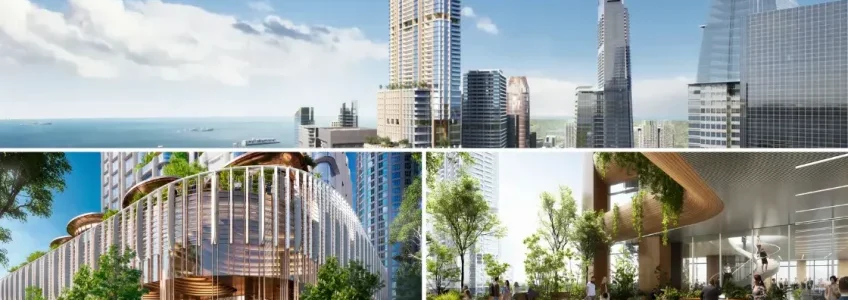In the heart of Ethiopia, a colossal dam construction project is taking shape – The Grand Ethiopian Renaissance Dam (GERD). This mammoth structure is no ordinary dam either; it’s a mega-dam towering twice the height of the Golden Gate Bridge, and covering a reservoir expanse almost as big as London. With its ability to generate over 5,000 megawatts of electricity, the dam holds the potential to lift millions out of poverty.
The next frontier in construction and architecture has been shaped by Copenhagen-based firm COBOD. They have unveiled an architectural marvel, setting a new milestone in the world of 3D printed structures. We present to you, an in-depth analysis of the project which is none other than Europe’s largest 3D printed building.
The team at DARPA is developing a revolutionary breakthrough in construction technology: self-healing concrete. This type of concrete is designed to repair itself after it has been damaged or cracked, eliminating the need for costly repairs and reducing maintenance costs. In this article, we take a closer look at this fascinating innovation, how it works and some of the possible applications.
The UK has launched the world’s first zero-emissions cement industrial trial, aptly named Cement 2 Zero, which has secured £6.5m of government funding from UKRI as part of the Transforming Foundation Industries Challenge. The trial aims to advance the decarbonisation efforts of the construction, cement and steel sectors to create net zero industries of the future, helping to meet the net-zero by 2050 initiative.
Structural steel fabrication is the process of transforming raw steel into structures, products or components that can be used in construction or other industrial applications. Structural steel fabricators create a variety of steel beams, girders, decks and columns, among other things, that are used in a wide range of construction projects. So, if you are looking to get involved in the construction industry or just want to know more about steel beam fabrication, then this article is for you.
The tallest skyscraper in Singapore is currently the Guoco Tower, measuring 284 m or 931 ft but that could change as Skidmore, Owings & Merrill (SOM) has revealed plans for a new mixed-use building that would reach 305 m or 1,000 ft. It will be more than just a building as this proposed skyscraper is inspired by bamboo forests with ambitions for a healthier work environment using special materials while reducing its carbon footprint.
Effective structural design is challenging as the process requires an engineer to carefully consider loads, stresses, and forces at every step. They must also think about the environment in which it will be built and how it might affect other nearby structures. In this article, we share a few of the most important structural design considerations an engineer should keep in mind at all times. But first, let’s recap what exactly is meant by structural design.
We all know how big the 3D printing industry has become with various applications across different sectors, but what if there is another construction technology that is faster, simpler and more affordable? There very well could be as this inventor reveals his inflatable concrete structures.
With sustainability in construction a big talking point in recent years, not to mention plastic waste, a startup in Los Angeles is building 3D printed homes using recyclable plastics. While it may not solve all of the world’s problems, it’s a big step in the right direction. What’s more, their method is faster, cheaper and more sustainable.
Steel is one of the most common materials, found in almost every industrial sector, from building bridges, factories, and structures to vessels and cars. In construction, the erection of structural steelwork involves the assembly of certain steel components into a frame. The processes include lifting, placing and connecting components which is achieved through bolting or site welding.











Recent Comments